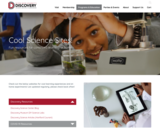
Check out the below websites for cool learning experiences and at-home experiments! List updated regularly; please check back often!
- Subject:
- Applied Science
- Material Type:
- Reading
- Author:
- sacred heart university
- Date Added:
- 06/26/2023

Check out the below websites for cool learning experiences and at-home experiments! List updated regularly; please check back often!
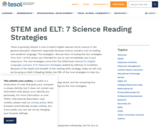
There is growing interest in how to teach English learners (ELs) science in the general education classroom especially because science contains a lot of reading and academic language. The strategies I discuss here, including the four strategies from Part 1 of this series, are intended for you to use immediately use in your classroom. The nine strategies come from the 2008 book Science for English Language Learners: K-12 Classroom Strategies (edited by Fathman & Crowther). Because of the depth and breadth of the reading skills strategy, today we will only be focusing on Skill 5 (Reading Skills), the fifth of the nine strategies to help ELs learn science.

OER Article

The diary that Samuel Pepys (pronounced “peeps,” 1633-1703) kept from 1660 to 1669 is the most famous diary written in the English language. In part this is because Pepys was writing at a fascinating moment, and, living in London and working for the government, he was in a good position to see important historical events take place in real time. Pepys began writing his diary just weeks before the restoration of the monarchy in 1660, and he was even on the ship that was sent to bring Charles II back to England. He was an eyewitness to Charles’s coronation, to the Great Fire of London in 1666, to a terrible occurrence of the plague, and to the wars that England fought with the Dutch in that decade, wars that turned out to be crucially important to establishing England as the dominant naval power in the north Atlantic. And as an important figure in the administration of the Royal Navy, he became a participant as well in the machinery of the state.
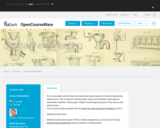
This course deals with the basic principles and design aspects of sanitary engineering infrastructure. This comprises: drinking water supply and treatment, sewerage and wastewater treatment. Study goals: Insight in technological aspects of the urban water infrastructure
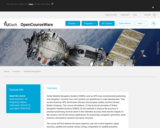
Global Satellite Navigation Systems (GNSS), such as GPS, have revolutionized positioning and navigation. Currently, four such systems are operational or under development. They are the American GPS, the Russian Glonass, the European Galileo, and the Chinese Beidou-Compass. This course will address: (1) the technical principles of Global Navigation Satellite Systems (GNSS), (2) the methods to improve the accuracy of standard positioning services down to the millimeter accuracy level and the integrity of the systems, and (3) the various applications for positioning, navigation, geomatics, earth sciences, atmospheric research and space missions. The course will first address the space segment, user and control segment, signal structure, satellite and receiver clocks, timing, computation of satellite positions, broadcast and precise ephemeris. It will also cover propagation error sources such as atmospheric effects and multipath. The second part of the course covers autonomous positioning for car navigation, aviation, and location based services (LBS). This part includes the integrity of GNSS systems provided for instance by Space Based Augmentation Systems (e.g. WAAS, EGNOS) and Receiver Autonomous Integrity Monitoring (RAIM). It will also cover parameter estimation in dynamic systems: recursive least-squares estimation, Kalman filter (time update, measurement update), innovation, linearization and Extended Kalman filter. The third part of the course covers precise relative GPS positioning with two or more receivers, static and kinematic, for high-precision applications. Permanent GPS networks and the International GNSS Service (IGS) will be discussed as well. In the last part of the course there will be two tracks (students only need to do one): (1) geomatics track: RTK services, LBS, surveying and mapping, civil engineering applications (2) space track: space based GNSS for navigation, control and guidance of space missions, formation flying, attitude determination The final lecture will be on (scientific) applications of GNSS.
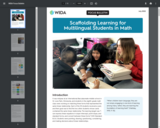
It was midyear at an International Baccalaureate middle school in
St. Louis Park, Minnesota, and students in the eighth-grade math
class were working on matching three forms that represented the
same linear relationship. Each of the 33 students received a card,
and their goal was to find the two other students whose cards
contained the same linear relationship. The learning target was “I
can express linear equations in slope-intercept, point-slope, and
standard forms, and convert between these forms” (MN Standard
8.2.4). Students were pointing, drawing, questioning, considering,
and making decisions about linear relationships
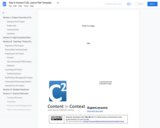
Our school, Kelly Middle School, is one of the oldest middle school buildings in 4J (primary construction was completed in 1945). Each year we practice earthquake drills. Why? Why should we be concerned about earthquakes? Where might an earthquake occur in the northwest area? Might it be minor or violent? How might this be measured? Is an earthquake a singular event, or a series of events? What increases or decreases an earthquake hazard? Do we have any early-warning systems? Is the school earthquake drill correct? Considering these questions students need to develop an understanding of how to prepare for, and react to an earthquake event. When students are comfortably informed, who should they report to?
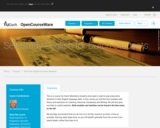
This is a course for Dutch (Bachelor) students who need or want to pay some extra attention to their English language skills. In this course you will find four modules with theory and exercises on Listening, Grammar, Vocabulary and Writing. We will also give you links to useful websites. We strongly recommend that you do not try to do this course in as short a time as possible: learning skills takes time, so you will benefit optimally from the course if you spend weeks, rather than days on it.
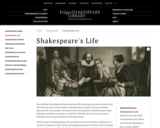
A brief history of the life of William Shakespeare given by the experts at the Folger Shakespeare Library. Includes sections on his early life, his successful years in London, and his enduring legacy.

Benjamin Franklin was sixteen years old and working as an apprentice in the Boston print shop of his older brother James when, in April 1722, he began writing a series of essays to be published in the New-England Courant under the pseudonym of “Silence Dogood.” In his Autobiography, Benjamin remembered slipping these essays, written in disguised handwriting, under the door of the Courant, which James was publishing; he assumed (probably correctly) that James would refuse to print an essay from him if he simply asked or submitted it under his own name. James published the essays, which became very popular among the newspaper’s readers. Benjamin kept his authorship of the series a secret, even from his brother, until after he finished writing them in October 1722, at which point James printed an advertisement asking for “Silence Dogood” to come forth. Benjamin confessed that he was the author, which seems to have annoyed his older brother. It was not too long after that that Benjamin left his brother’s shop–breaking his apprenticeship–and moved to Philadelphia.
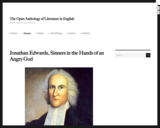
Edwards originally gave this as a sermon in July 1741, and it was printed later that year. This text is derived from from The Selected Sermons of Jonathan Edwards, ed H. Norman Gardiner (New York: Macmillan, 1904) digitized by Project Gutenberg.
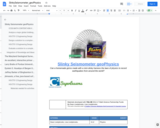
This unit uses the slinky seismometer as a means of studying physics concepts such as waves, sound and the speed of sound vs speed of light, resonance, electricity and magnetism, Lenz Law and magnetic dampening (backwards engineering). Students experiment with the basic parts of the seismometer and either build or connect the seismometer to the internet to take and upload data.

This course is designed to familiarize you with the major theory and research surrounding the study of small group communication and provide an opportunity to analyze and develop solutions to a community problem while working in a small group.
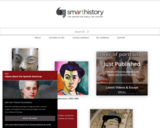
Smarthistory, the art history provider of the Khan Academy, provides comprehensive essays and videos covering art historical topics from prehistoric through contemporary times. Thematic approaches and current ethical issues related to art and archeology are also covered and explored. Downloadable PDF documents are available for specific geographic regions. This site is geared towards the introductory learner and is appropriate for AP high school students, college students, and the general public. New material and formats, including a globally-oriented digital textbook, are being added to the site.
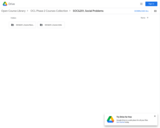
Every society faces problems that are more than just individual troubles. In this course we will use a sociological perspective to critically examine the bases of social inequality and the resultant problems in society. We will explore concerns related to families, education, the workplace, the media, poverty, crime, drug abuse, health issues, war and terrorism, the environment and global concerns. We will also look at social action and possible solutions to these problems through both individual and community efforts.
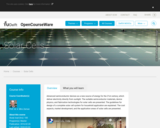
Advanced semiconductor devices are a new source of energy for the 21st century, delivering electricity directly from sunlight. Suitable semiconductor materials, device physics, and fabrication technologies for solar cells are presented in this course. The guidelines for design of a complete solar cell system for household application are explained. Cost aspects, market development, and the application areas of solar cells are presented.
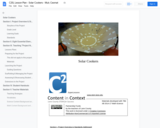
In this project students will research and then build a basic solar cooker shell made out of cardboard. Then they will run a variety of materials through experiments. Data from the experiments will be used to determine which materials should be added to the solar cooker shell to improve its ability to heat up food.
This project was created as a collaboration between a science and an engineering/woodshop class. The engineering class researched and build the basic solar cooker cardboard shells. The science class tested additional materials to add to the shells to improve the solar cookers. Then the engineering class, following the directions from reports created by the science class, added the materials to the solar cooker shells to create the final products.
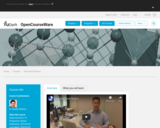
In the electrical engineering, solid-state materials and the properties play an essential role. A thorough understanding of the physics of metals, insulators and semiconductor materials is essential for designing new electronic devices and circuits. After short introduction of the IC fabrication process, the course starts with the crystallography. This will be followed by the basic principle of the quantum mechanics, the sold-state physics, band-structure and the relation with electrical properties of the solid-state materials. When the material physics has been throughly understood, the physics of the semiconductor device follows quite naturally and can be understood quickly and efficiently. Study Goals: The student can 1) determine the crystal structure, the density of atoms and the Miller indices of a crystal, 2) apply Schrodinger's wave equation to various potential functions and derive a probability of finding electrons, 3) discuss the concept of energy band formation and difference of material properties in terms of the band, 4) derive the concentrations of electron and holes with a given temperature in terms of Fermi energy, and 5) can discuss drift, diffusion and scattering of carriers in a semiconductor under various temperature and impurity concentrations.
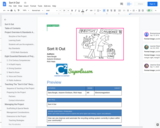
In this project, students will use knowledge of electricity and electromagnetism to collaboratively design and test a model of a magnetic recycling sorter. They will evaluate the performance of their models and propose further modifications based on the output of their magnetic device measured in mT using a Vernier probe. They will also physically test their magnets on a model of a conveyor belt containing recyclable items. Students will track their data from both tests, with the ultimate goal of creating the strongest and most effective magnet with given materials. Finally, students will present their findings and proposed final design to peers and community partners involved in the recycling industry. The entire process takes about 6 weeks. The unit is a great fit for standards within energy and engineering & design.